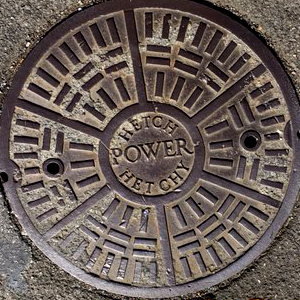Investor-owned utility’s new demands on taxpayers to continue serving municipal electricity customers are unfair, anti-competitive, ‘illegal under federal law’

SAN FRANCISCO (April 18, 2016)—City Attorney Dennis Herrera today filed the final pre-trial brief in San Francisco’s high-stakes suit against Pacific Gas & Electric Company over anti-competitive and lawless tactics by the investor-owned utility that Herrera calls a “$600 million shakedown” of city taxpayers. The trial begins one month from today before the Federal Energy Regulatory Commission, or FERC, in Washington, D.C.
At issue in the administrative litigation Herrera filed in Oct. 9, 2014 is whether PG&E can continue to frustrate San Francisco’s efforts to fulfill its rights and duties under federal law to serve its own local government services and tenants with electricity generated by its three city-owned hydropower plants. PG&E’s new demands could also jeopardize San Francisco’s ability to serve its municipal customers with other sources of electricity that the city generates and purchases.
The trial beginning May 18 before an administrative law judge at the FERC is the latest—and potentially most decisive—skirmish in a century-old struggle between San Francisco and the private utility headquartered there.
“After bullying San Francisco for more than a century, PG&E has now decided to reinterpret federal law to create prohibitive new barriers to our ability to power our own municipal services cleanly and economically,” said Herrera. “PG&E’s new demands to access its distribution system amount to a $600 million shakedown of San Francisco taxpayers. The company is abusing its monopoly for unfair and anti-competitive ends, and its conduct is illegal under federal law. What’s at stake in our case against PG&E at the FERC is nothing less than San Francisco’s energy future. That’s why I’m so grateful to our partners at the San Francisco Public Utilities Commission for working so tirelessly with us over the last several years to reach a fair agreement, and to steadfastly hold the line against PG&E’s bad faith and intransigence. We’re optimistic that the FERC trial will produce the right conclusions, and that commissioners will compel PG&E to live up to its legal obligations.”
Background
Almost immediately after passage of the 1913 Raker Act—which created San Francisco’s Hetch Hetchy Reservoir and the city-owned hydropower system sited there—PG&E began systematically blocking San Francisco’s fledgling public power enterprise from completing its own electricity distribution system. For decades thereafter, PG&E wielded the advantages of its market monopoly and limitless political spending in a stranglehold over city efforts to fulfill the promise of a locally-owned power enterprise, which federal and local law both envisioned since the early 20th century. The private utility spent millions defeating efforts by successive generations of city leaders to win voter approval for bonds to build such a system. All failed at the polls. As a result, San Francisco taxpayers have for years relied on service agreements and federal tariffs to utilize PG&E’s existing distribution facilities where San Francisco lacked its own—on terms that have unavoidably favored the interests of PG&E shareholders.
But with the expiration of San Francisco’s most recent interconnection agreement with PG&E in 2015, the utility monopoly moved to impose draconian new requirements on city taxpayers for their continued use of PG&E’s distribution system. The city is continuing to pay rates approved by the FERC to use PG&E’s facilities. In addition, PG&E’s unprecedented demands would require San Francisco to invest as much as $600 million to construct new and even duplicative distribution facilities over the next decade—or begin phasing out its use of clean, cost-effective hydropower from city-owned facilities. PG&E’s stunning new demands and novel interpretations of its own legal obligations, according to Herrera’s suit, blatantly violate federal regulations, and flout the Federal Power Act’s open access protections.
Those protections, and the FERC decisions interpreting them, allow San Francisco to continue using PG&E’s facilities (at rates approved by federal regulators) to maintain electricity service to its customers, provided those customers are “grandfathered” as defined by the Federal Power Act. Grandfathering is a central aspect of the dispute, because federal law allows the city to continue serving its existing customers through PG&E’s distribution facilities where San Francisco lacks its own. San Francisco is similarly authorized under federal law to deliver power to its customers with its own electrical distribution facilities.
But PG&E’s reinterpretation of federal law is a whole cloth novelty, squarely aimed at stymying San Francisco’s ability to continue serving its municipal functions and tenants. The newly-invented definition of grandfathering pushed by PG&E would instantly render a significant portion of San Francisco’s municipal facilities ineligible to be grandfathered for city electric service. It would additionally exclude from municipal service most city facilities—like clinics, libraries, shelters, fire stations, and other vital public services—whenever they relocate from their existing sites. Herrera’s suit requests that the FERC hold that all of San Francisco’s current customers are eligible for grandfathering pursuant to federal law, and remain eligible without new facilities even if those customers relocate. He additionally seeks that PG&E be required to abide by its federal tariff regarding when new facilities are required.

SF v. PG&E Case Documents
[outofthebox dir=”/Website/News/SF v. PG&E” mode=”files” viewrole=”administrator|editor|author|contributor|subscriber|guest” filedate=”0″ showcolumnnames=”0″ downloadrole=”administrator|editor|author|contributor|subscriber|guest”]The case is: City and County of San Francisco v. Pacific Gas and Electric Company, U.S. Federal Energy Regulatory Commission, Docket No. EL15-3-000, filed Oct. 9, 2014.